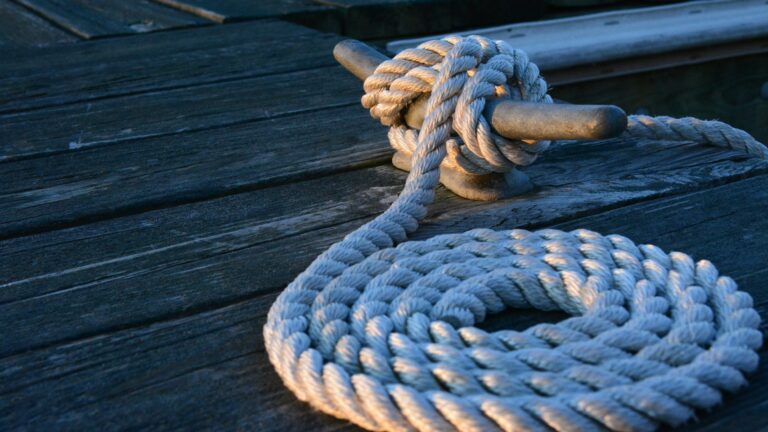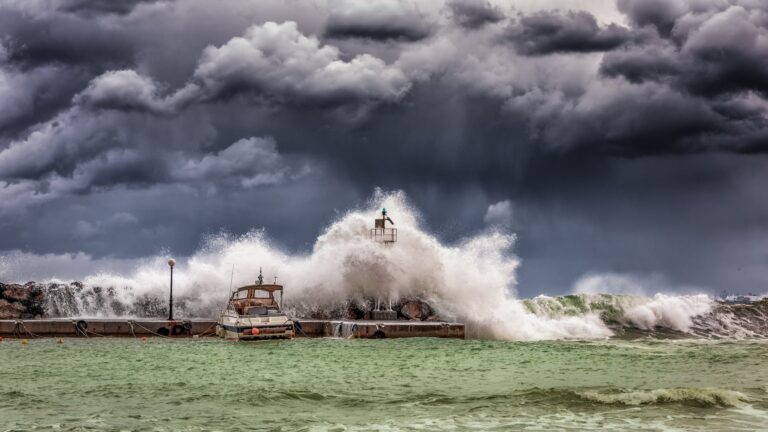How Many Years Do Sails last?
Sailing enthusiasts often ask: “How many years do sails last?” To answer this question, it is important to understand the lifespan of different types of sails, as well as factors that can affect their life expectancy and how to prolong their life by following regular maintenance and cleaning procedures.
What Is The Lifespan Of A Sail?
The lifespan of a sail depends on several factors, including material, construction, size, use and maintenance.
Generally speaking, sails on a sailboat may endure anywhere from 1,500 to 2,500 hours of use or around ten years, assuming they are appropriately fitted to the yacht and rigging and well-cared for.
Factors That Affect The Lifespan
The quality of a sail’s construction plays an important role in determining how long it will last—sails made with high quality materials and strong stitching will usually last longer than those made with inferior materials or poor craftsmanship.
Additionally, the size of a sail will also influence its longevity—larger sails are more prone to wear and tear due to their increased surface area, therefore they may not last as long as smaller sails with less exposure to wind and weather elements.
Finally, where a sail is used regularly in harsh conditions such as strong winds or choppy waters its life expectancy can be significantly reduced compared with sails used in more moderate conditions such as light winds or calm waters.
The Importance Of Regular Maintenance
In order to ensure that your sail lasts for as long as possible it is important to adhere to regular maintenance protocols such as cleaning after each use, inspecting the sail for damage or signs of wear and tear, applying protective treatments or coatings when necessary (such as UV protection for spinnakers) and storing in an appropriate environment when not in use (for example out of direct sunlight).
Additionally particular attention should be paid to areas such as corners where wear and tear can accumulate over time which can cause premature failure if left unchecked, these areas should be repaired promptly when necessary by replacing damaged seams or canvas patches.
Cleaning And Storing Sails
Cleaning your sail regularly is essential in order to prolong its life, salt deposits that accumulate over time can corrode materials if left unchecked while dirt particles can act like sandpaper abrasively wearing away fabric fibers over time which reduces durability significantly, both should be removed after each use using a mild detergent solution followed by rinsing thoroughly with clean water then drying completely before storage in a cool dry place out of direct sunlight which will help protect against ultraviolet radiation damage caused by prolonged exposure to sunlight which can reduce the life expectancy significantly over time especially on spinnakers which have little protection from UV rays due to their translucent nature making them particularly susceptible to fading or discoloration over time due to prolonged exposure during storage or sailing
Conditions alike, however this does not necessarily mean that their performance characteristics are compromised but rather that their visual appearance may become less attractive over time due its inability to retain its original vibrant colors given prolonged exposure without suitable protection from UV rays from regular maintenance procedures being implemented accordingly, this should be taken into consideration when purchasing new sails too since some materials may prove more resistant than others depending on their construction techniques whether laminated or sewn etcetera so it pays off for sailors who are serious about sailing performance longevity wise too since investing into higher quality materials initially may prove more beneficial in terms upkeep costs involved with regular maintenance requirements throughout the lifespan compared with cheaper alternatives whose lifespan may prove shorter overall given similar sailing
conditions being encountered alike, ultimately though it all comes down to personal preference depending on individual needs within budgetary constraints too since not everyone has unlimited resources at their disposal either so it pays off doing research into different types available before making any purchase decisions accordingly too so that one’s expectations match reality using common sense principles too!
Repairing And Replacing Sails
When repairs become necessary they should only be performed by qualified personnel using appropriate techniques such as reinforcing seams if necessary (or even replacing them outright if beyond repair) whilst at all times taking into account the tension loads imposed onto them through normal sailing conditions so that any repairs performed remain effective throughout the lifetime expected accordingly, any replacement parts used should also be sourced from reputable suppliers who provide suitable guarantees for good measure too so that peace mind remains intact throughout ownership period involved!
Different Types Of Sails And Their Lifespan
Different types of sails are constructed differently depending on their intended use whether racing/cruising/offshore/downwind etcetera therefore these variations will naturally affect their lifespan accordingly since heavier duty fabrics such as dacron polyester used mainly for cruising purposes will generally prove more durable than lightweight fabrics such laminated mylar often used in racing applications while spinnakers typically employ nylon variants designed specifically designed specifically for downwind sailing applications hence why they require extra care compared with other types mentioned previously given their lack protection against ultraviolet radiation damage otherwise!
How To Prolong The Life Of Your Sail
Prolonging your sail’s life starts with choosing an appropriate material based on your intended use – heavier duty fabrics like dacron polyester are best suited for cruising applications while lighter weight fabrics like mylar work best for racing purposes – then adhering strictly to regular maintenance protocols such as cleaning after each use, inspecting periodically for signs of wear & tear & performing repairs promptly if/when necessary whilst at all times storing away from direct sunlight during downtime periods so that UV radiation damage does not occur prematurely otherwise!
Conclusion
In conclusion it is important to understand what affects the lifespan of your sail: material quality & construction techniques play an important role while regular maintenance & cleaning procedures must be adhered strictly in order ensure optimal performance & longevity throughout ownership period!
Ultimately though one should also consider type applications when selecting new material accordingly whilst at same time taking into account budgetary constraints involved too since some materials may prove more expensive initially but require less upkeep overtime thereby proving cost effective overall given similar usage patterns encountered alike!
FAQs
How long do sails typically last?
Generally speaking, sails on a sailboat may endure anywhere from 1,500 to 2,500 hours of use or around ten years provided they are appropriately fitted onto yacht & rigging along with being well cared for through regular maintenance & cleaning procedures respectively!
What factors affect a sail’s lifespan?
The quality of a sail’s construction plays an important role in determining how long it will last—sails made with high quality materials & strong stitching generally last longer than those made with inferior materials or poor craftsmanship while size also plays an importance factor – larger sails have greater surface area exposed thus being more prone wear & tear overtime compared smaller ones hence why they may not last as long overall!
How can I prolong my sail’s life?
Adhering strictly regular maintenance protocols such cleaning after each use along inspecting periodically damage/signs wear & tear whilst applying protective treatments/coatings (i.e.: UV protection spinnakers) when necessary all help prolong your sail’s life significantly over time – particular attention should also paid corners where wear & tear accumulates overtime which can cause premature failure if left unchecked hence why these areas should repaired promptly through replacing damaged seams/canvas patches respectively whenever needed!







